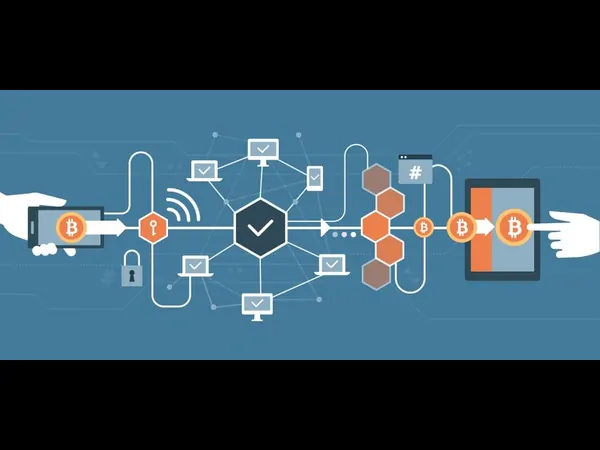Blockchain technology has revolutionized the way transactions are conducted, providing a secure and transparent platform for various industries.]
However, as with any technological advancement, security becomes a critical concern. In this article, we will delve into the world of blockchain security, exploring its significance, challenges, and real-world examples that highlight its effectiveness.

What is Blockchain Security?
Blockchain security refers to the measures and protocols put in place to safeguard the integrity, confidentiality, and availability of data within a blockchain network.
A blockchain is a decentralized and distributed digital ledger that records transactions across multiple computers, making it highly resistant to unauthorized alterations. Security in the context of blockchain is essential to ensure trust and prevent malicious activities.
- FTX VS Crypto.com | Which One Is The Best For You in 2023?
- How to Withdraw from Binance to Bank Account
- Bitcoin Script: A Comprehensive Guide to Cracking the Code
What Are the Types of Blockchain?
There are mainly three types of blockchains: public, private, and consortium blockchains. Public blockchains are open to anyone and are highly transparent.
Private blockchains, on the other hand, are restricted to a specific group, ensuring greater control over the network. Consortium blockchains are semi-decentralized, shared among multiple organizations to facilitate collaboration.
Blockchain Security Challenges
Despite its robust design, blockchain faces several security challenges:
- Immutable Data: While immutability is a strength, it becomes a challenge if erroneous or fraudulent data is added to the blockchain.
- 51% Attack: In a blockchain network, if a single entity controls over 51% of the computing power, they could manipulate the transactions.
- Smart Contract Vulnerabilities: Smart contracts can have coding flaws that attackers exploit to steal assets or disrupt operations.
- Private Key Management: The security of private keys is crucial; if lost or stolen, it can lead to unauthorized access.
- Regulatory Compliance: Blockchain should comply with data protection and industry regulations, posing a challenge due to its decentralized nature.
- Interoperability: Integrating blockchain with existing systems can expose vulnerabilities.
- Polygon NFTs: Exploring Low Gas Fees and Swift Transactions
- How to Buy Land on the Sandbox Platform: A Basic Guide
6 Blockchain Security Examples
Here are six remarkable examples of companies implementing blockchain security to enhance various aspects of their operations:
Mobilecoin
Mobilecoin focuses on privacy and security in mobile payments. It leverages blockchain to enable private and secure transactions without compromising user data.
Coinbase
Coinbase, a popular cryptocurrency exchange, emphasizes security by utilizing advanced encryption and cold storage techniques to protect users’ assets.
J.P. Morgan
J.P. Morgan employs blockchain to enhance cross-border payments and securities trading, providing efficiency and security in the financial sector.
Lockheed Martin
Lockheed Martin, an aerospace company, uses blockchain to ensure the integrity of its supply chain by tracking and verifying the origin of parts and materials.
Cisco
Cisco implements blockchain to enhance the security of its Internet of Things (IoT) devices, ensuring secure communication and data integrity.
Hashed Health
Hashed Health utilizes blockchain to improve healthcare data sharing and interoperability, ensuring patient data privacy and security.
Blockchain Risks to Avoid
To harness the benefits of blockchain security, it’s crucial to be aware of potential risks:
Phishing Attacks
Attackers can use social engineering techniques to trick users into revealing their private keys or other sensitive information.
Code Exploitation
Vulnerabilities in the code of a blockchain application can be exploited to gain unauthorized access or disrupt operations.
Routing Attacks
Attackers can manipulate network routing to intercept and alter transactions, compromising their integrity.
Stolen Keys
If private keys are stolen, unauthorized parties can gain access to wallets or accounts, leading to asset theft.
What is blockchain security?
Blockchain security involves protocols to protect data integrity, confidentiality, and accessibility within blockchain networks.
How does blockchain enhance security in mobile payments?
Mobilecoin employs blockchain to facilitate private and secure mobile transactions without compromising user data.
What is a 51% attack?
A 51% attack occurs when an entity controls over 51% of a blockchain network’s computing power, potentially manipulating transactions.
Q2: What are the challenges in blockchain security? Challenges include immutable data concerns, 51% attacks, smart contract vulnerabilities, private key management, regulatory compliance, and interoperability.
Q4: How does Coinbase prioritize security? Coinbase ensures security through advanced encryption and cold storage techniques to protect users’ cryptocurrency assets.